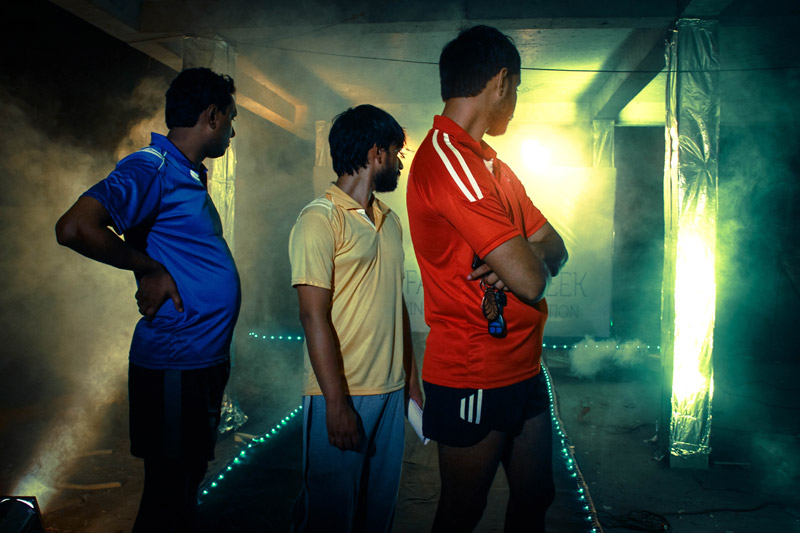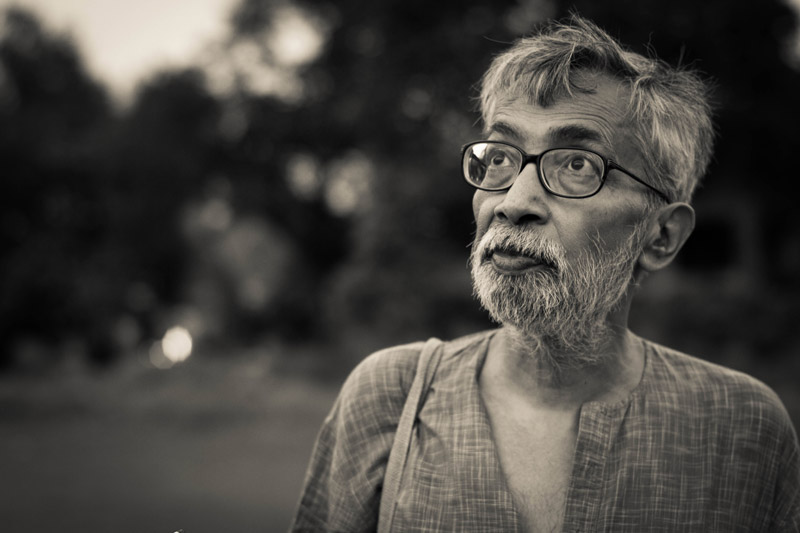Kaushik Mukherjee a.k.a Q




Grant Period: Over one year
Kaushik Mukherjee, better known as Q, is a filmmaker from Kolkata who makes documentary films as well as full length feature films. His first feature, Gandu, never released in India, and earned critical acclaim. His next film, Tasher Desh, an adaptation of Tagore’s dance-drama by the same name, was partly produced by NFDC. With a pan-Indian and international cast, this film received international attention. Kaushik, also a musician of band, Gandu Circus, is working on his graphic novel.
Through this film project Q seeks to explore and document the life, work and sensibility of the Bengali writer and poet, Nabarun Bhattacharya. Nabarun is the son of Bijan Bhattacharya (writer, playwright, and one of the leading IPTA activists) and Mahashweta Devi (writer and activist). Coming from that lineage it may have been natural for him to write with the sharp political edge that is his signature. However, what makes his work particularly interesting is the use of the language of the oppressed and disenfranchised underbelly of Bengali society that is made marginalised and almost invisible in the various representations of a polished Bhadralok culture of Bengal in its literature and cinema. This is where Q’s identification with Nabarun begins. Nabarun’s singular voice of dissent against mainstream Bengali culture post the Hungry Generation, his sensibility as a nihilist-anarchist, satirist, political writer, and his use of language as a tool of subversion, makes Q see Nabarun not just as a creator he admires but also as his political predecessor.
Q’s film is part observational documentary, for which he had already shot enough footage of his long conversations with Nabarun, before he approached IFA. He applied for support from IFA, for that part of the film which will attempt to look inside Nabarun’s mind. The mind does not have any documents, but it is where Nabarun harbours his ideals and the bizarre characters of his stories that make his work so starkly different from everything else around him. Q has decided to shoot fictional parts to portray Nabarun’s psychological complexities and the creative process that emerges from there. This is because this film is a site for a conversation between a filmmaker and a litterateur through their arts in a common rhetoric. While literature allows many things to remain open to the reader’s imagination thereby enabling the ‘fantastic’, cinema often has to represent them in concrete, visual details. Through this film both Q and Nabarun are extending their own areas of practice to challenge each other in this realm. Nabarun’s active engagement with Q is propelling Q to make sense of the creative process of Nabarun’s psychological world, by pushing cinema to dwell in between the ambiguous domain of the fantastic and the real. The project questions and pushes quite a few boundaries - those between the literary and the filmic language, the real and the represented, and the celebratory and the critical. Q will also try and device alternative channels of making the film available in the market, which is a model he has been developing for the dissemination of his films for some time.
